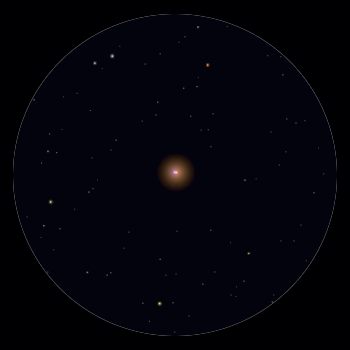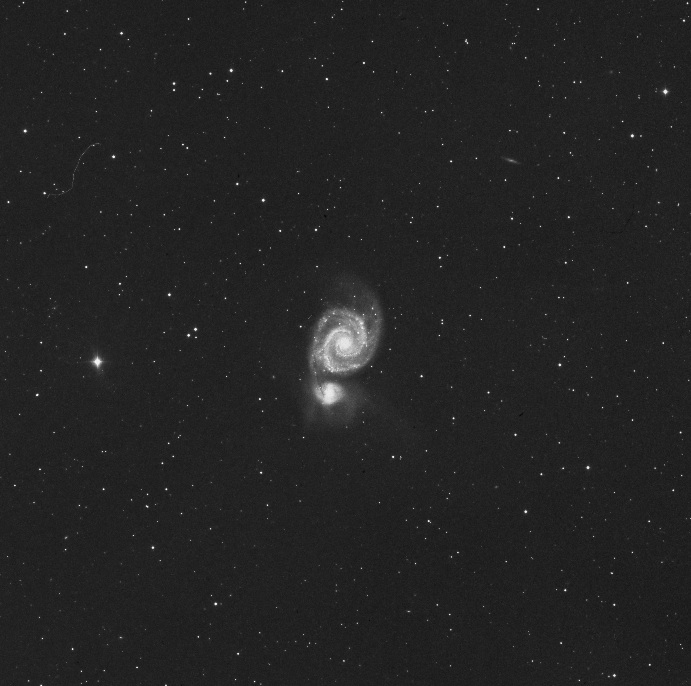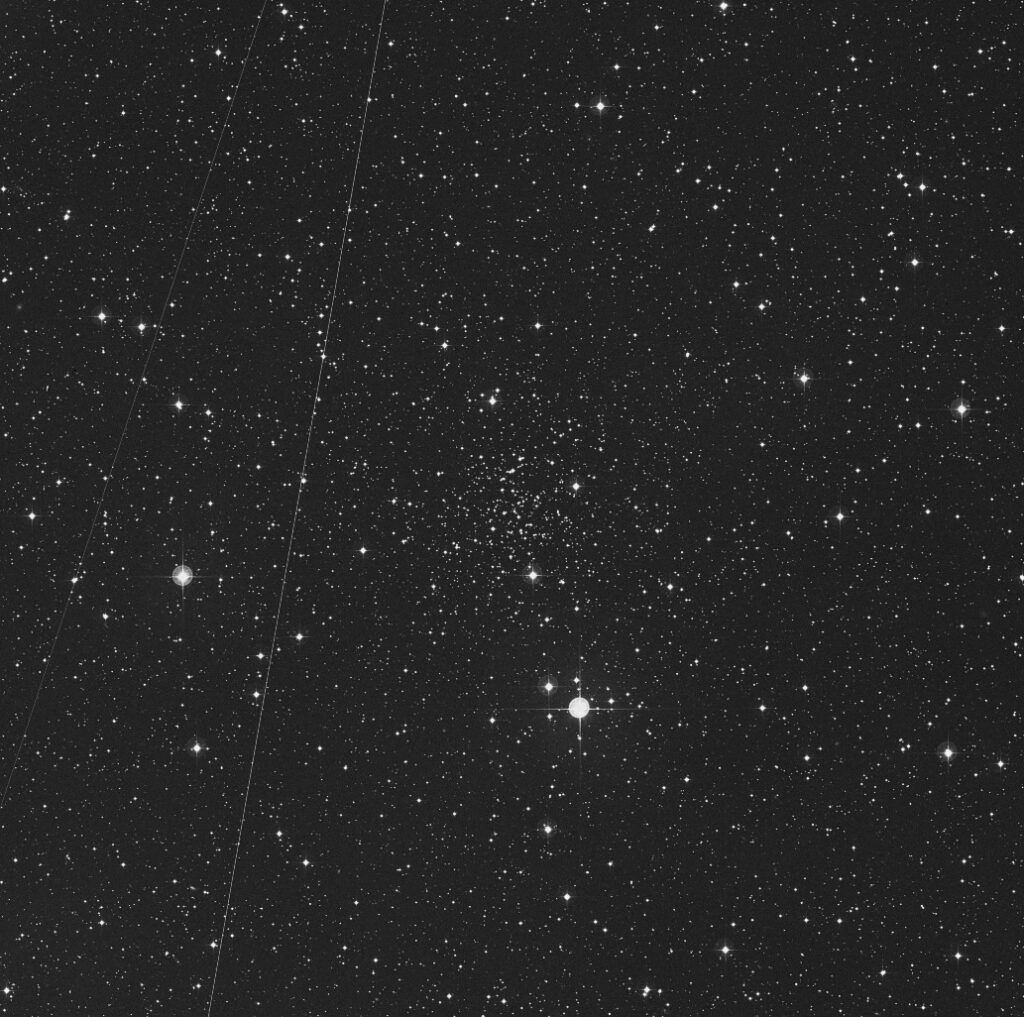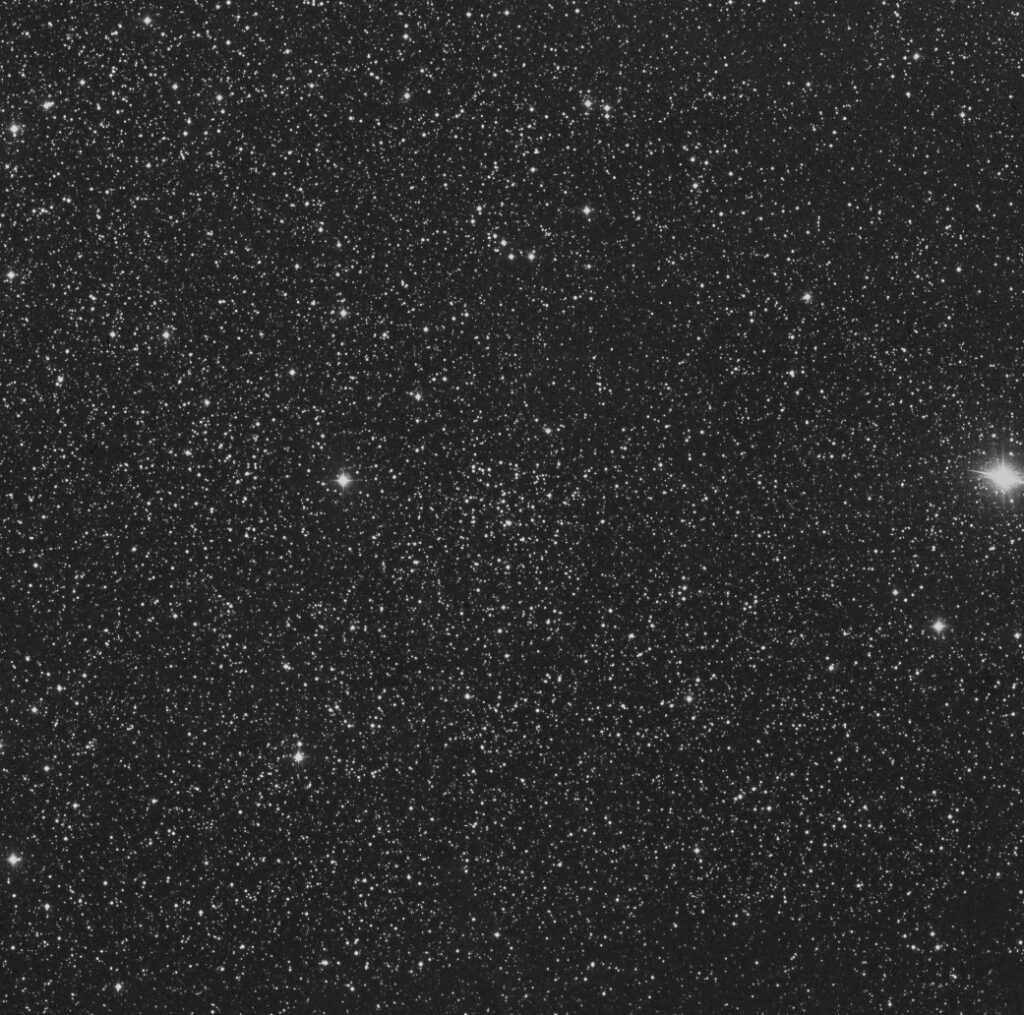Wow. Two clearish nights in a row.
Objects: Jupiter, Clavius Crater- The Moon, The Double star Almaak, M51 and two Caroline Herschel objects NGC2204 and NGC381.
- Session Started 19:27
- Seeing: II Slight quivering of the image
- Transparency: Poor. The Milky way was invisible and only principle Constellations stars were seen below a altitude of 45 degrees
- Airmass at time of observation: Jupiter – 1.2 , Clavius Crater- The Moon – 1.2 , Almaak – 1.3, M51 – 1.8, NGC2204 – 2.8, NGC381 – 1.5
The Double Star :Almaak

Image courtesy of Wikipedia
Observed 20:12 GMT. I only went to Almaak to do a more accurate sync before moving onto NGC 891, which eventually proved completely invisible in these conditions.
Using a 10mm eyepiece, I was struck by the Orange primary and a light sky blue secondary. Sand says she only saw the secondary as white.
Jupiter
Observed 20:56: While conditions were better than the previous night, the detail remained much the same. I didn’t spend any more time than a cursory glance.
One interesting point point though. Skytools 3 has a view scope chart which attempts to display what would be visible through a particular scope /eyepiece combination on a given night. It takes into account the altitude of the object, how close it is to a light source such as the Sun or Moon as well as air temperature. Tonights chart of Jupiter displayed the Moon Amalthea. While Jupiter’s 4 brightest Moons are about mag 5.0 to 6.0, Amalthea has a mag of 14.4. Despite careful observation through various eyepieces, it was not visible. This is odd, as most of the time you can see more stars through the eyepiece than Skytools says should be visible, however with the conditions tonight, I wouldn’t have expected to have seen much beyond stars of 13.0 mag.
M51

Observed 21:43: I wasn’t holding any hopes of seeing anything of M51. Initially nothing could be seen, but after a few minutes of staring at what appeared to be an empty patch of sky, two misty islands started to form with averted vision. I’m didn’t make out any structure or shape whatsoever.
All I could say with any certainty is that the satellite galaxy (NGC 5194) was oriented to the North of the main body of M51 ( NGC 5195). Looking at M51 altitude of 33 degrees it’s not surprising little was visible, as at that altitude you could see the murk extending well beyond 40 degrees.
Moon: Clavius Crater

Observed 19:27: The view of Magnius crater had completely changed in 24 hours. All the shadows and details within the crater had gone as sunlight flooded the whole crater. I decided to image the area with the webcam anyway, and managed to get a much more detailed image of the area and a spectacular view of Clavius in particular. The quality of the image improved with a small improvement of transparency over the night before.
Scope: 250mm Altair Astro R.C f/8
Camera: DMK21AUG618 webcam
Image Capture: Sharpcap v1.4
F/L: 2032mm
Processing: Autostakkert 2.1. 4000 frame avi. Selection of the best 10% of those frames. Resulting stack was then run through Registax 6 where I applied level 1 and 5 wavelet sharpening, before loading the file into Photoshop for the usual curve processing. Thinking back on it now, I realise I should have done it the other way around – general processing first and sharpening last before saving. This is one of image processing No-No’s and I normally never ever do it for my terrestrial images, so I’m at a loss as to why it’s happened here. Anyway slapped wrists all round.
NGC2204: Collinder 88, Melotte 44, Raab 34, OCL 572

Observed 20:28: Really disappointing
While DDS photo show this as quite a compact – and blindingly obvious -open cluster. Conditions were such that all that was visible was a sparse star field cut in half with a zig zag of stars starting at the North with the slightly Orange 6.0 mag HR2243 and traversing the field of view of the 26mm eyepiece (40arc min) and ending at the 11.5 mag TYC 05941-1614 1.
With all that I could see, you wonder how Caroline Herschel would have picked this open cluster out from any of the other close grouping of stars during a sweep using her speculum coated 100mm reflector.
Looking at the chart and DSS image afterwards, it’s quite an obvious grouping, but in the conditions I had this evening, I would have passed it by.
It would have been an interesting exercise to have viewed this through the TMB80 to see if it really does stand out from the background.
NGC381: Collinder 10, OCL 317

Observed 21:21: Another disappointing Caroline Herschel object. Really nothing of note to observe. I see from James O’Meara’s Hidden Treasures that Michael Hoskins dismisses this as a C.H discovery saying it’s an entry error and that what she actually observed was NGC189.
This is another object that I should have turned the refractor on.
Again, another reasonably productive night under the stars.